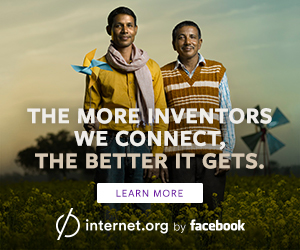Innovation is the heartbeat of progress. It’s the driving force behind every technological advancement, every artistic masterpiece, and every revolutionary idea that has shaped our world. But have you ever wondered what goes on inside the minds of innovators? How do they come up with groundbreaking ideas that change the way we live and think? The psychology of innovation holds the key to unraveling this mystery, offering us insights into how the human mind fosters creative breakthroughs.
The Intricate Dance of Neurons
At its core, innovation is about making novel connections between seemingly unrelated concepts. It’s the ability to see patterns where others don’t, to juxtapose ideas that haven’t been paired before. This cognitive dance is facilitated by the brain’s intricate network of neurons.
Neurons are the brain cells responsible for transmitting information through electrical impulses. When we encounter new information or experiences, neurons form connections called synapses. The more we expose ourselves to diverse knowledge and experiences, the more synaptic connections we create. This lays the foundation for innovative thinking by providing the brain with a rich pool of resources to draw from when generating ideas.
The Power of Divergent Thinking
Innovation flourishes when individuals engage in divergent thinking – a thought process that involves exploring multiple possible solutions to a problem. Unlike convergent thinking, which seeks a single, logical answer, divergent thinking encourages expansive, free-flowing thought. This open-ended approach is the breeding ground for creativity and allows the mind to venture into uncharted territories.
One famous technique that stimulates divergent thinking is brainstorming. By suspending judgment and encouraging participants to share any idea that comes to mind, brainstorming taps into the subconscious and unearths hidden gems that might have otherwise remained buried. It’s a testament to the power of divergent thinking in unlocking innovative potential.
The Role of Cognitive Flexibility
Cognitive flexibility, the ability to adapt our thinking based on new information, is a hallmark of innovative minds. This mental agility allows innovators to pivot, iterate, and refine their ideas as they encounter challenges and feedback. Cognitive inflexibility, on the other hand, can lead to stagnation and the inability to adapt to changing circumstances.
One way cognitive flexibility manifests is through the willingness to embrace failure. Innovators understand that failure is not a dead-end but a stepping stone towards success. Thomas Edison famously said, “I have not failed. I’ve just found 10,000 ways that won’t work.” This mindset shift transforms setbacks into opportunities for learning and improvement, fostering resilience in the face of adversity.
The Role of the Unconscious Mind
Innovation often seems to strike like a lightning bolt out of nowhere – a sudden, brilliant idea that seems to emerge from thin air. But in reality, these “eureka” moments are often the result of the unconscious mind at work.
Our conscious mind is limited in its capacity to process information and find solutions. However, the unconscious mind has a vast reservoir of knowledge and experiences stored away. It tirelessly sifts through this information, making connections behind the scenes. When the conditions are right, it presents the conscious mind with a fully formed idea seemingly out of the blue.

This phenomenon highlights the importance of relaxation and downtime in the creative process. Engaging in activities that allow the mind to wander, such as taking a leisurely walk or daydreaming, can actually aid in problem-solving by giving the unconscious mind the space it needs to connect the dots.
Nurturing an Innovative Mindset
While some people might possess a natural inclination for innovation, the good news is that an innovative mindset can be nurtured and developed over time. Here are a few strategies to foster innovation:
- Embrace Curiosity: Cultivate a curious attitude towards the world around you. Ask questions, explore new fields, and seek out experiences that challenge your assumptions.
- Diversify Inputs: Expose yourself to a wide range of disciplines, cultures, and perspectives. The more diverse your knowledge base, the richer the pool of resources your brain can draw from.
- Practice Mindfulness: Mindfulness meditation can enhance cognitive flexibility and creative thinking. By focusing on the present moment, you can break free from rigid thought patterns and open your mind to new possibilities.
- Encourage Playfulness: Play is not just for children; it’s a powerful tool for stimulating creativity. Engage in activities that encourage experimentation and play, whether it’s through art, puzzles, or improvisation.
- Collaborate: Collaborative environments foster the cross-pollination of ideas. Engaging with people from different backgrounds can lead to unexpected insights and innovative solutions.
The Ever-Evolving Landscape of Innovation
As our understanding of the psychology of innovation deepens, so too does our ability to harness its power. From the intricate dance of neurons to the role of the unconscious mind, innovation is a product of the complex interplay between our cognitive processes. By embracing divergent thinking, nurturing cognitive flexibility, and adopting an innovative mindset, we can propel ourselves into a future where groundbreaking ideas reshape the world as we know it. Check out more articles recommended you read about the psychology of innovation.















